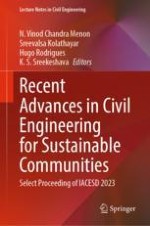2024 | Buch
Recent Advances in Civil Engineering for Sustainable Communities
Select Proceeding of IACESD 2023
herausgegeben von: N. Vinod Chandra Menon, Sreevalsa Kolathayar, Hugo Rodrigues, K. S. Sreekeshava
Verlag: Springer Nature Singapore
Buchreihe : Lecture Notes in Civil Engineering
